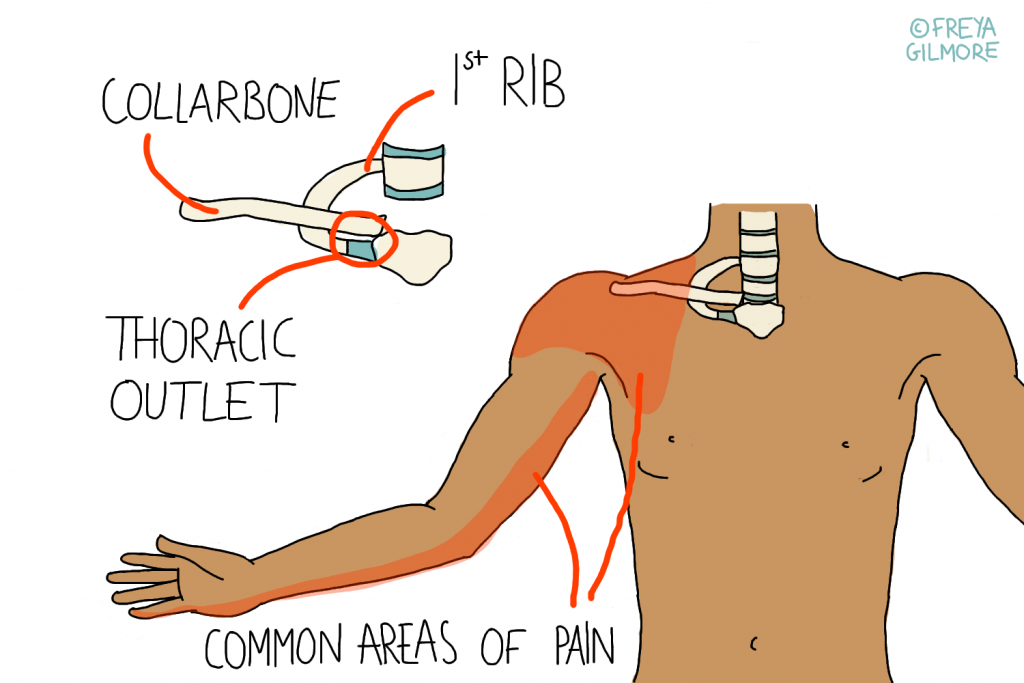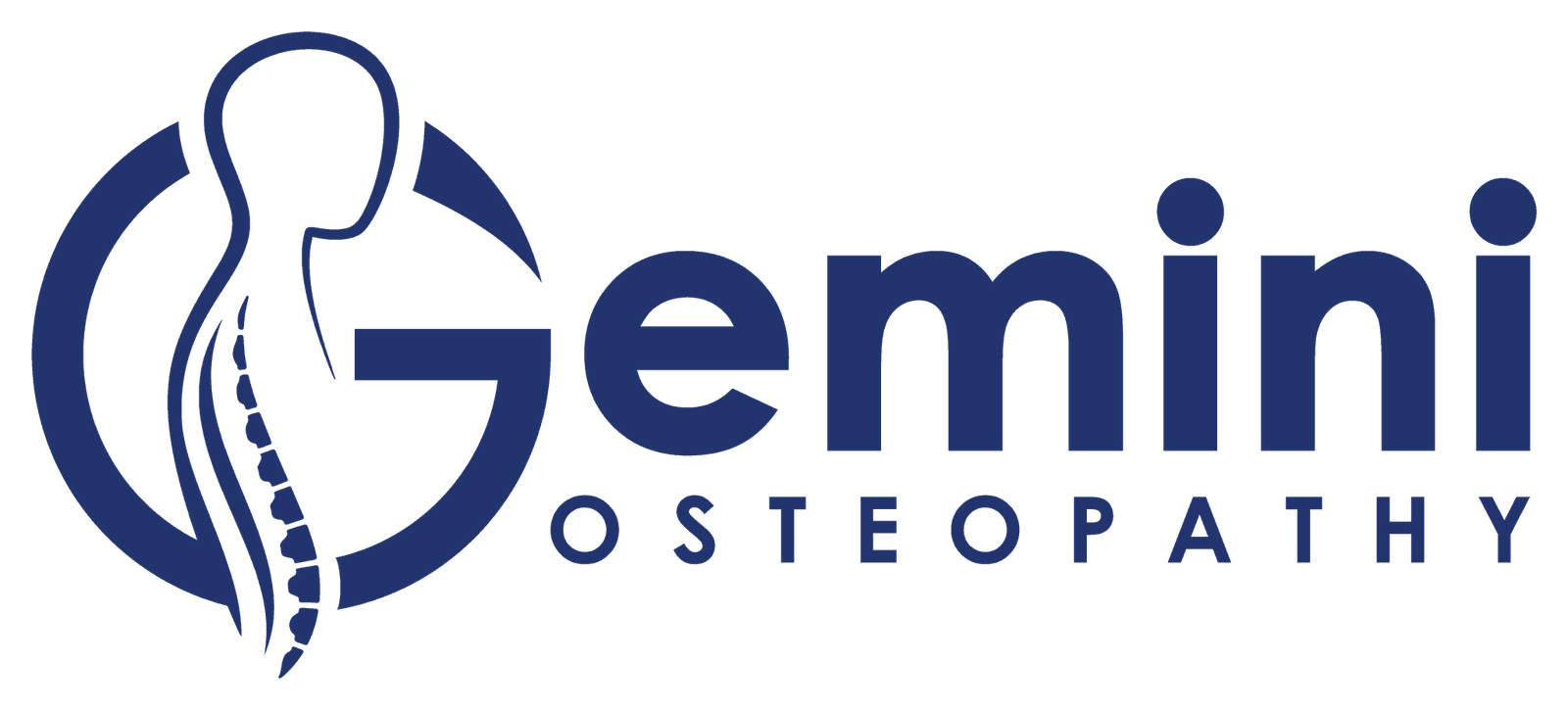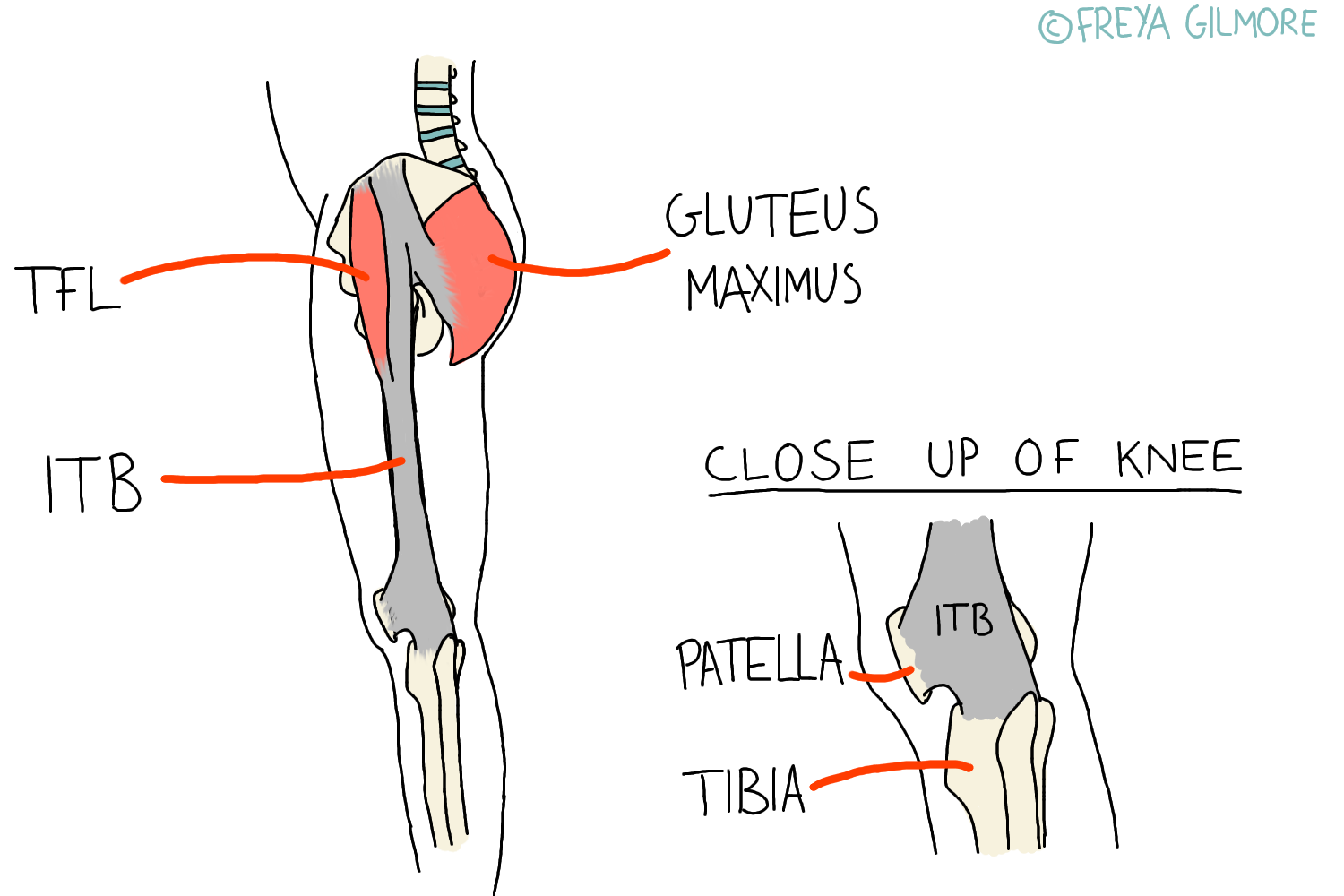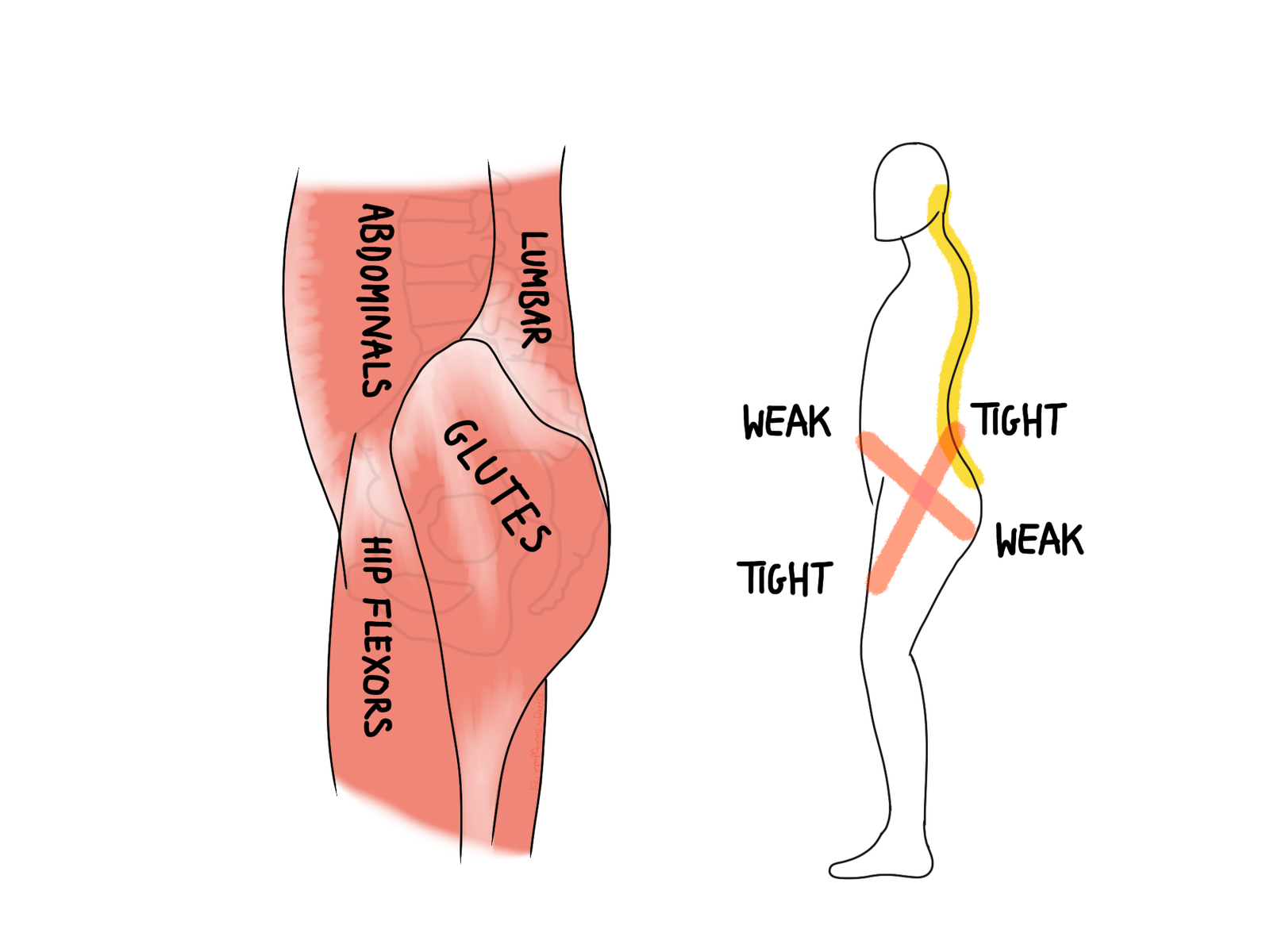The IT band is a band of tissue that runs down the side of the…

Thoracic Outlet Syndrome
Every now and then we see a lot of patients with the same condition. Before lockdown, we saw a lot of thoracic outlet syndrome.

The thoracic outlet is the area at the top of the rib cage where nerves and blood vessels leave on their way to the arm. This is quite a small space, so occasionally the nerves or vessels can be squashed. This causes symptoms in the arm known as Thoracic Outlet Syndrome (TOS).
Posture and the Thoracic Outlet
One set of muscles that can make compression in the thoracic outlet more likely is the pectorals. Pec major and pec minor run very close to the outlet- but it’s not just about proximity. When the pecs are tight, they encourage a hunched posture. This means the shoulder comes forwards and makes the outlet even smaller. If this position is held repeatedly for long periods the pecs can shorten. In addition to this, the muscles around the shoulder blades can become stretched and weak. This combination further encourages that hunched posture and predisposes you to TOS.
This isn’t the same as having “bad posture”
Extra Ribs
Up to 1/200 people have at least one extra rib. The technical term is a “cervical rib” as it grows from the bones in the lower neck. These ribs are not fully formed and may just be a small extension of bone, but they are more common in people with TOS. If symptoms do not respond as expected, your osteopath might send you for imaging to see if this could be a factor.
Symptoms of Thoracic Outlet Syndrome
The diagram above shows areas in the arm and shoulder commonly affected by TOS. Symptoms may include:
- Pain or an ache
- Pins and needles or other strange sensations
- Numbness
- Shoulder or arm weakness
These symptoms can be caused by irritation of the nerves or compression of blood vessels. Despite the overlap, it is important to identify which kind of TOS is present: neurological or vascular.
Neurological vs Venous or Arterial TOS
Your osteopath can use special tests to determine whether your symptoms are caused by compression of nerves or blood vessels. Mild venous or arterial TOS may be managed conservatively, but your osteopath will monitor closely in case a referral becomes necessary. Neurological TOS seems to respond better to manual therapy, particularly when there is a strong postural element.
Evidence supports conservative treatment for mild cases of TOS.
If you’re suffering with pains or other symptoms in your arm, book in today to get it addressed



